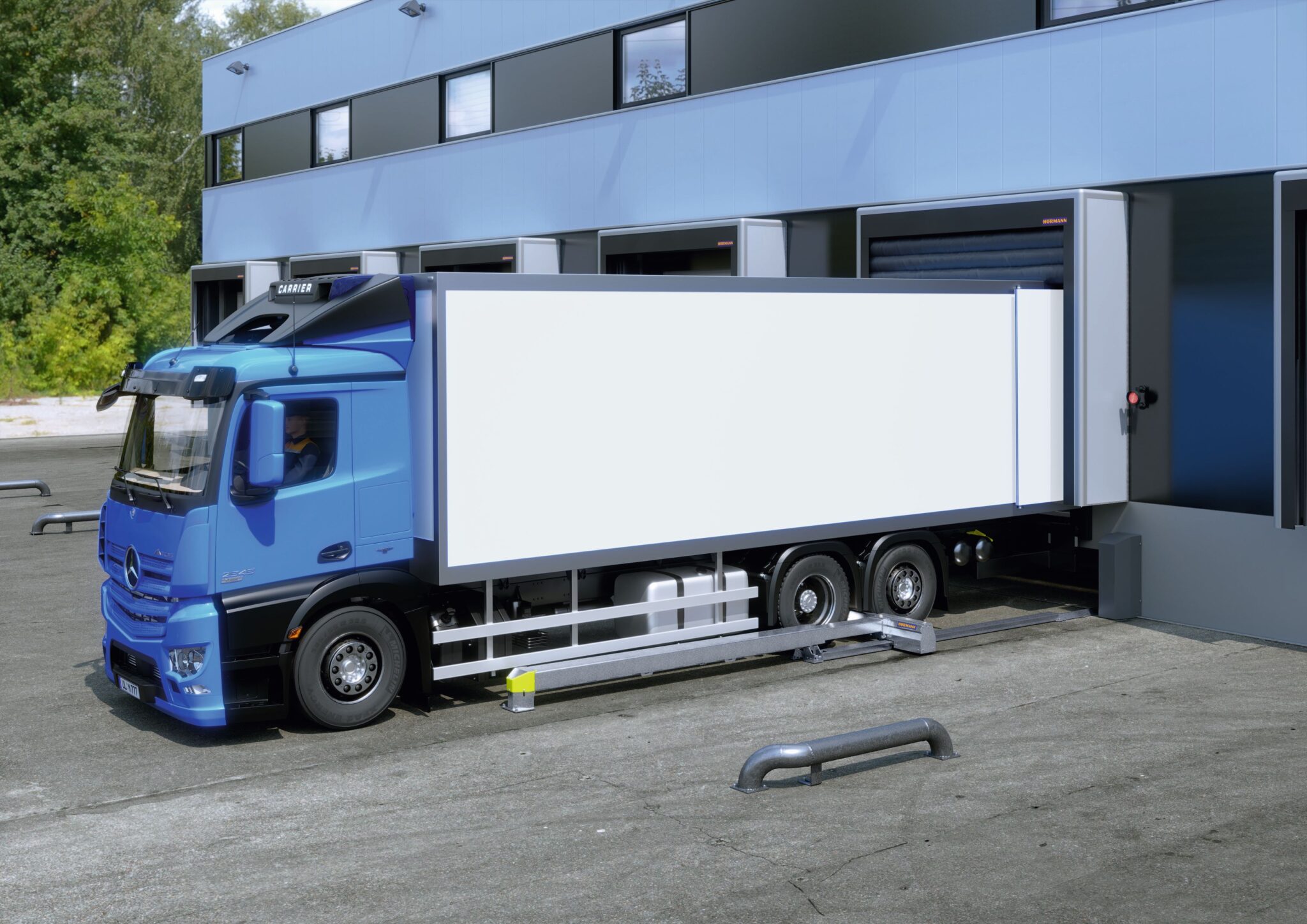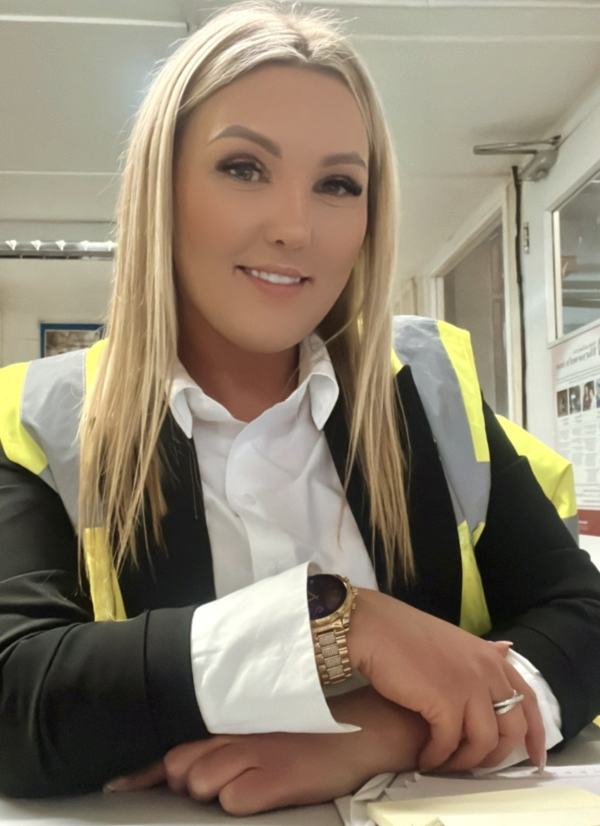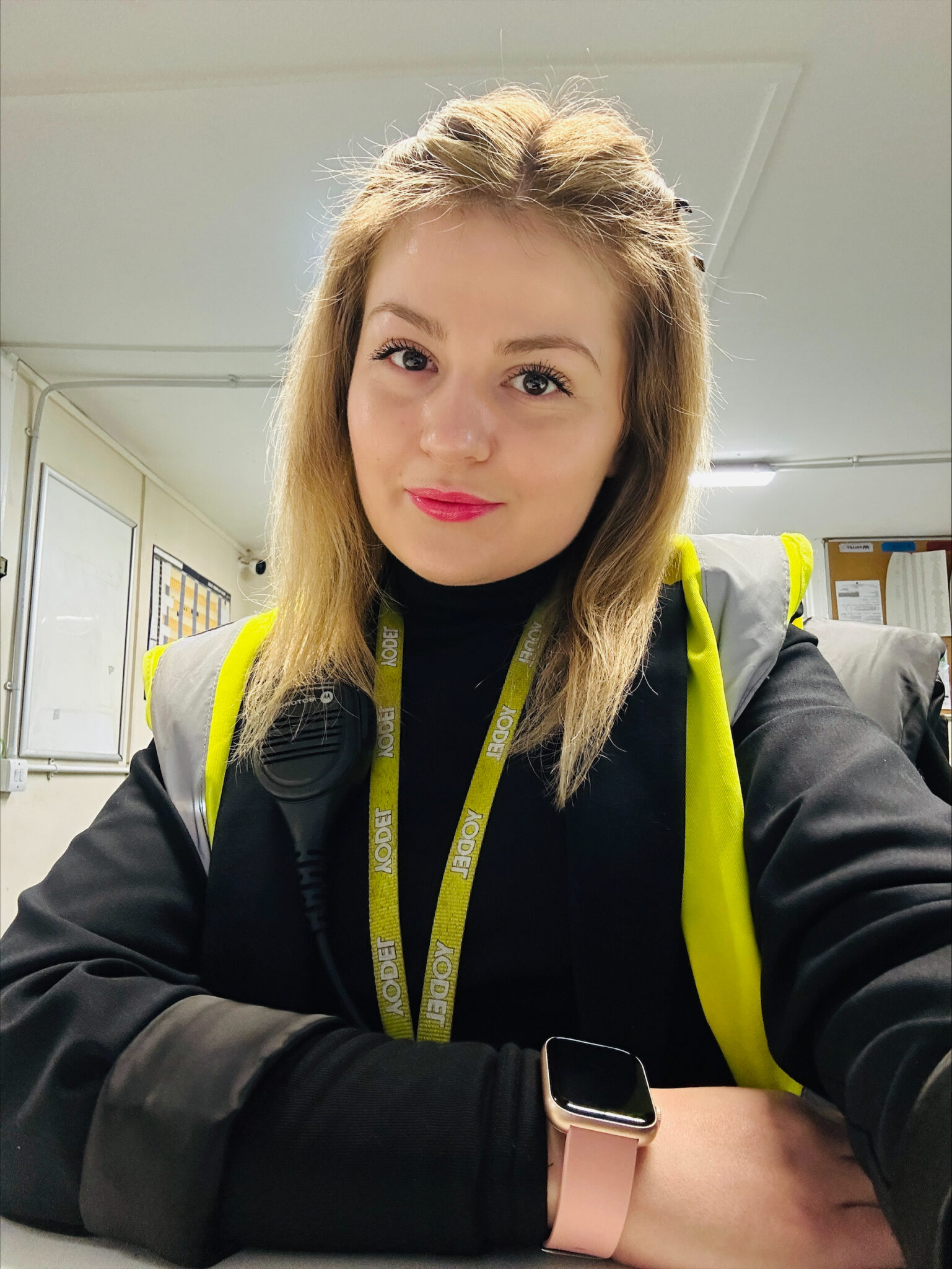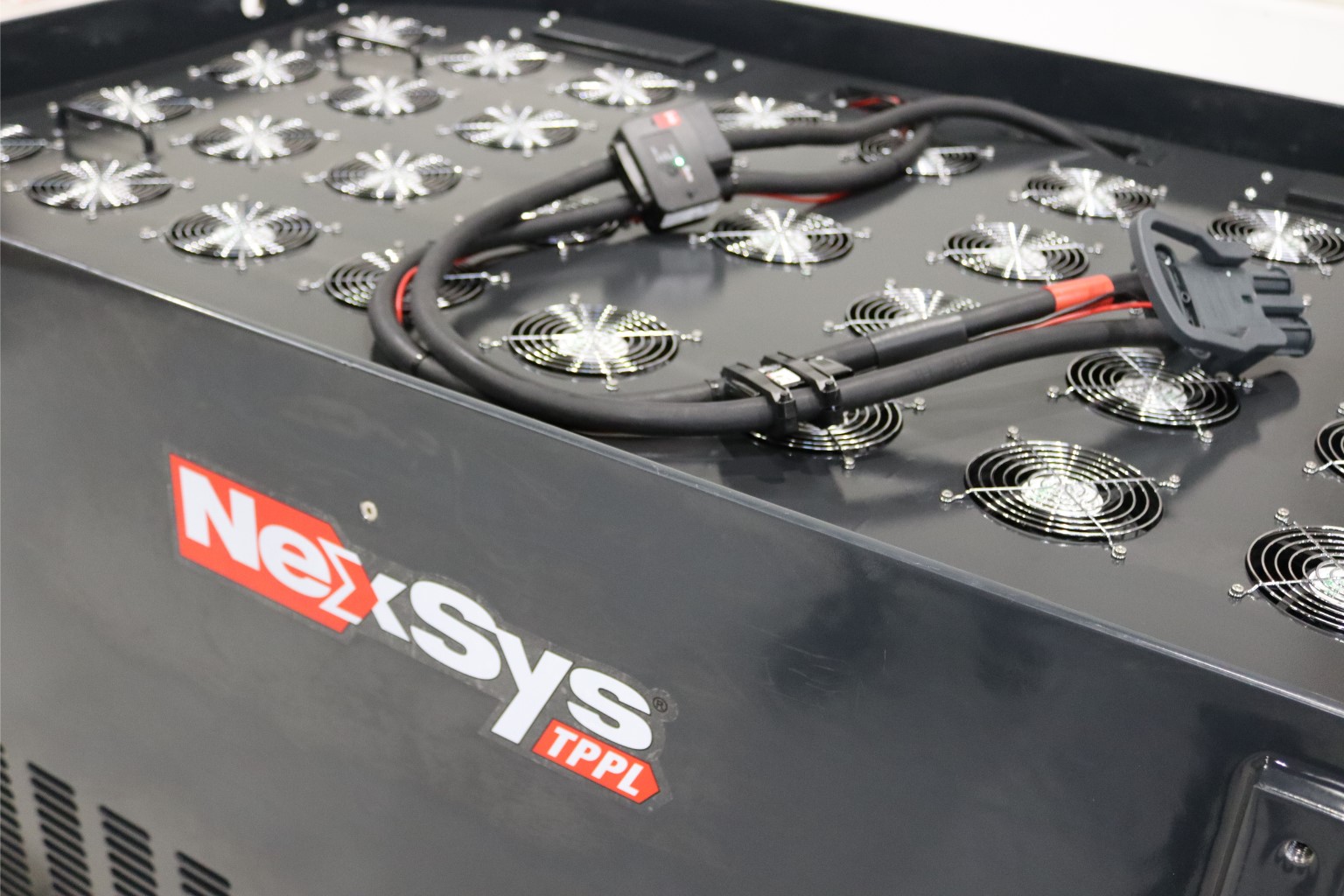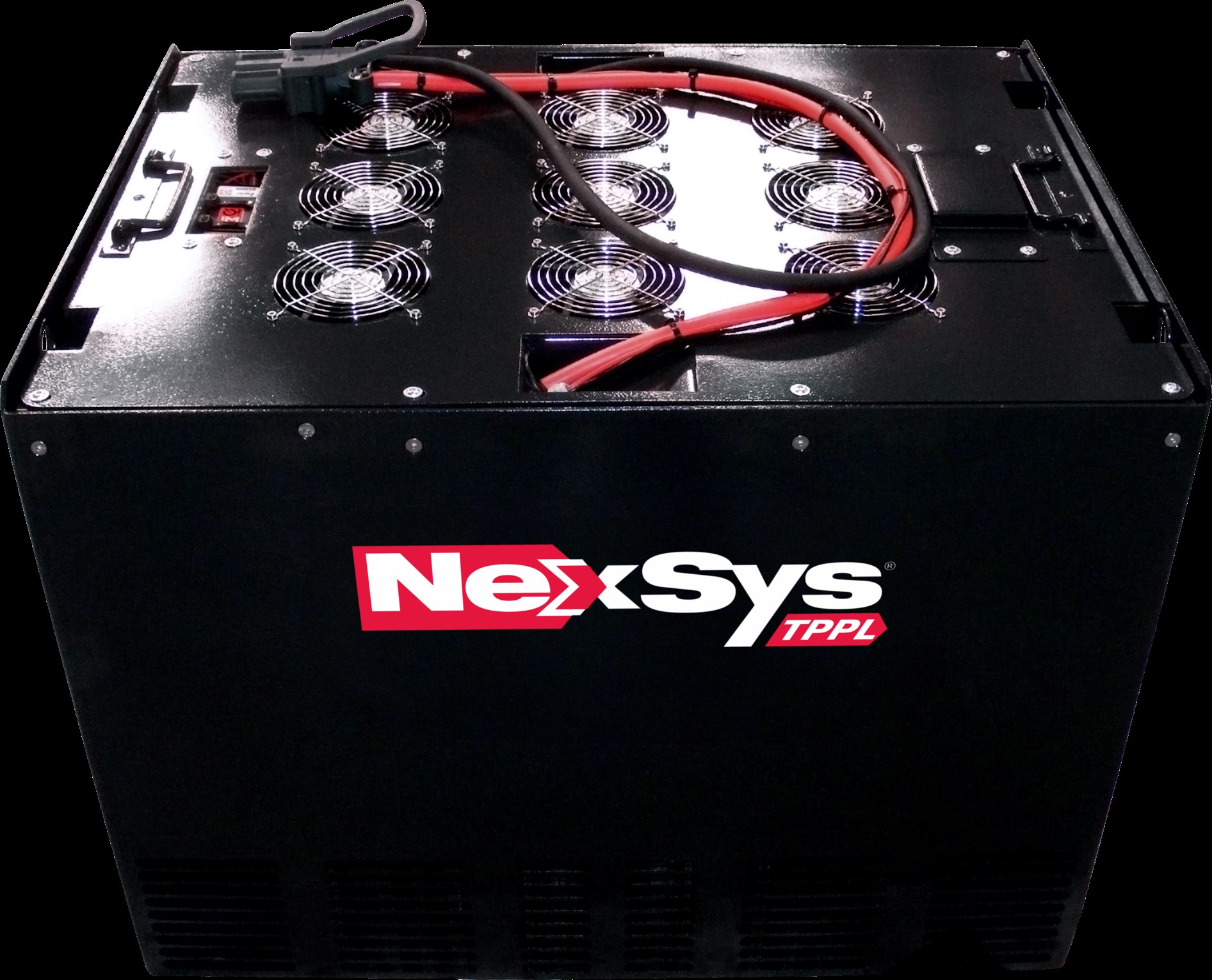Hörmann UK have introduced a new Automatic Wheel-blocking system (AWB) for the ultimate in loading bay safety. Designed to counter the risk of the premature departure of a vehicle and ‘vehicle creep’ during loading and unloading operations, Hormanns’ AWB detects a reversing vehicle and securely blocks the rear wheel preventing it from moving – helping to eliminate human error and keeping warehouse personnel and drivers safe.
One of the most versatile automated vehicle restraint systems available on the market, the Hörmann AWB is suitable for use with all types and models of vehicles, from small parcel vans to large articulated lorries. Built to withstand the rigorous conditions of busy loading bay operations, it is rugged in its construction, with all the hydraulic and electronic components being contained within a sturdy galvanised housing which provides protection against dirt and adverse weather.
The system provides a working range of 2825mm and a blocking height of 300mm removing any possible collision with mudguards and vehicle trims.To take account of any unevenness on site it is height adjustable by up to 50mm and is available in either left or right-handed versions. It is quick and easy to fit as it only requires a few anchor points.
Once a vehicle is safely positioned at the loading bay the integrated wheel guide can be activated inside the building at the touch of a button. The driver remains within the vehicle with a warning light/traffic light system on the loading bay to indicate when it is safe to move off. The easy-to-use Hörmann AWB controller can be used as a stand-alone solution or integrated into other Hörmann control systems. It can be simply updated and interrogated using mobile data.
Commenting on the new AWB, Phil Thorpe Industrial Division Manager at Hörmann UK said, “The new AWB from Hörmann is what the market would expect, a robust, well-engineered and practical solution to a problem often seen during loading operations. Suitable for all types of warehousing and logistics facilities we see this product playing a key role in improving workplace safety, reducing accidents, and keeping loading operatives safe in what can be a dangerous area. Our AWB system has been designed with ease of installation, operation, and maintenance in mind, all helping our customers to maximise their loading efficiency and ensure that any downtime is kept to an absolute minimum.”
similar news


